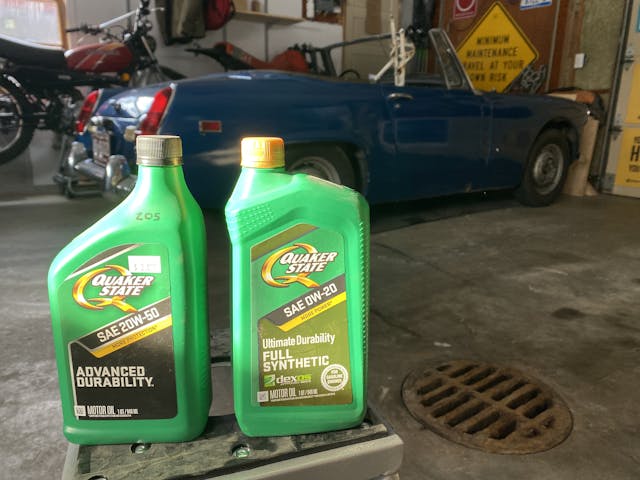Media | Articles
What’s the real difference between synthetic oil and conventional oil?
Nothing ignites the vintage car discussion boards like the oil debate, and the hardest part of that conversation involves separating fact from fiction. Many long-held beliefs may not be based around modern science, but sometimes the knowledge to correct those false assumptions is hard to find. Thankfully, Engineering Explained took a look into the basics of conventional vs synthetic oils.
The main difference is the size and construction of the molecules that comprise the base oil. A conventional oil is formed by nature, meaning that its molecular construction is irregular and thus its viscosity, measured over the wide range of temperatures experienced by modern engines, can be slightly unpredictable. That change in viscosity calculated over change in temperature is called the viscosity index. Essentially, conventional oil’s viscosity index reveals that the larger molecules do not want to move around when cold and the smaller molecules move too readily when hot. In general, that’s not a damning verdict, but it means that conventional oil is hardly ideal for engines with increasingly tighter tolerances.
Enter synthetic oil, whose base oil designed by engineers to include molecules that are much more uniform compared to those in conventional oil. That molecular uniformity produces a significantly more stable oil. Synthetic oil flows easier at cold temperatures and thicker at higher one—really, it’s a win-win. Of course, this is the point in the internet debate where an expert points out that you can manipulate conventional oil to mimic synthetic if you use the right additives.
What an additive? It’s in the name, really: they’re chemical compounds added to the base oil to alter certain properties of that oil. One additive might help with cold flow, and another might induce a higher viscosity at higher temperatures. Even so, that means your conventional oil needs two additions just to be on a level playing field with synthetic when it comes to viscosity stability.
The other factor to consider is the oxidation protection provided by synthetics. Again, the degree of oxidation protection provided by an oil is dictated by its molecular composition—not their size or shape, this time, but their chemical nature. Conventional oil is, yet again, beholden to nature’s construction, and ring molecules and double bonds are common. Unfortunately, these two constructions provide an easy attachment point for oxygen molecules. That oxidation makes the molecules larger, producing issues with flow and build-up. A synthetic oil does not have these oddly-shaped molecules and is less receptive to oxygen molecules. Since synthetics fight oxidation at a chemical level, most synthetic oils have longer oil change intervals.
Marketplace
Buy and sell classics with confidence
Of course, this is just the tip of the oil-chemistry iceberg. Still, understanding some of the core concepts sets you up for more research into petrochemicals, should you be curious. I’ll continue to stick to well-researched recommendations, since my brain is already too full to go back to chemistry class. If yours isn’t though, please report back with your findings.


